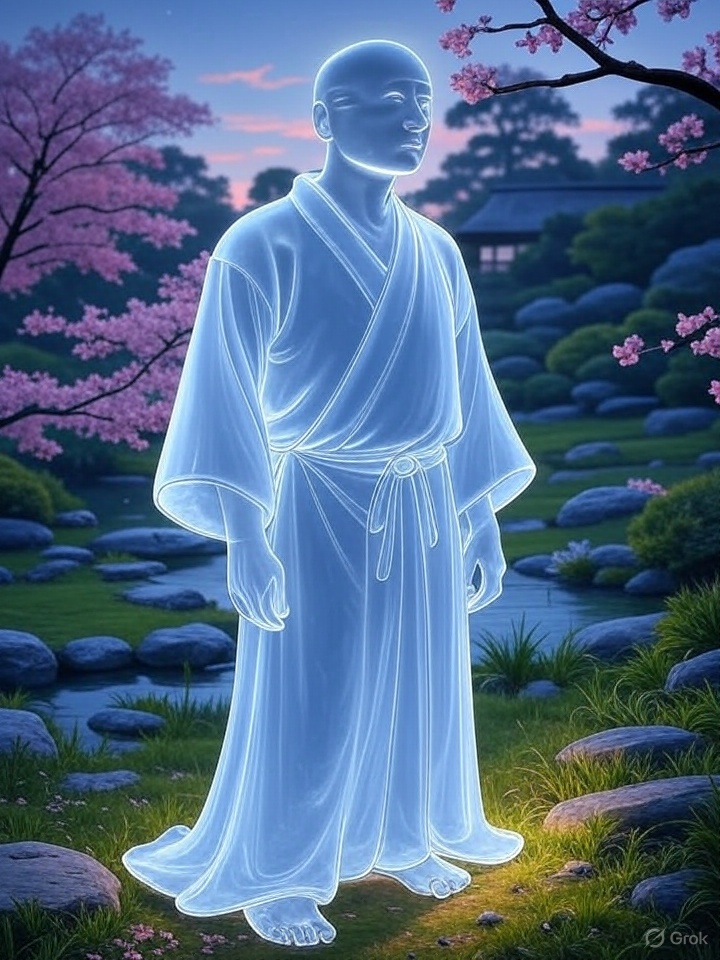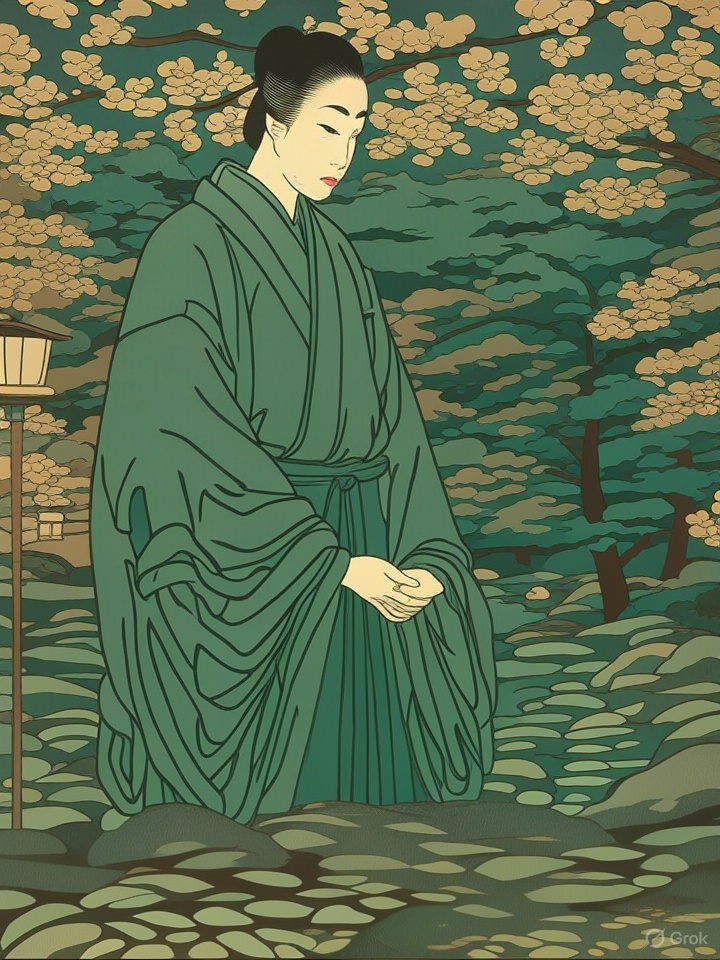Name Meaning
Overview
\n
Ato-oi-kozō (後追い小僧) translates to “the little boy who follows behind.” This yōkai is known for silently trailing people—especially when they walk alone through temples, graveyards, or wooded paths.
- Ato (後) = Behind
- Oi (追い) = To chase or follow
- Kozō (小僧) = Boy, often a temple servant or youth → “Trailing Boy”
Origin
- Spotted in stories from Kansai and Tōhoku regions of Japan.
- Believed to be the spirit of a child or monk who died young and lingers around sacred places.
Appearance
- Often invisible—people only sense footsteps or feel a presence behind them.
- When seen, it may appear as a small, shadowy boy in old-fashioned robes.
- Sometimes glimpsed in mirrors or reflections but disappears instantly.
Behavior
- Follows people silently—especially at night or in lonely places.
- Never attacks, but its presence causes unease or fear.
- Sometimes considered a spirit yearning for guidance or prayer.
Symbolism
- Represents unfulfilled spirits or lost souls.
- Warns travelers to remain spiritually aware and cautious.
- A reminder of the thin veil between the world of the living and the dead.



